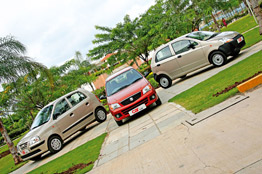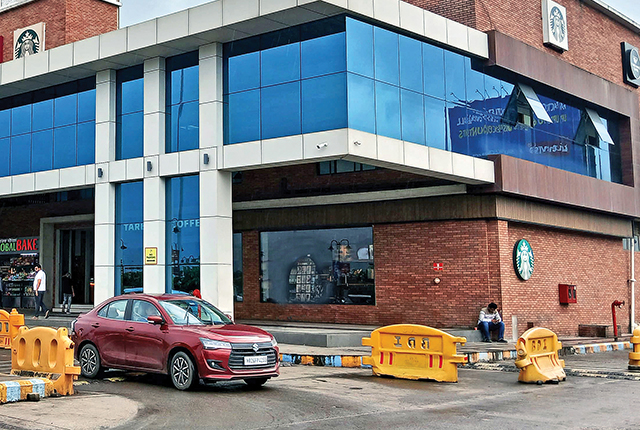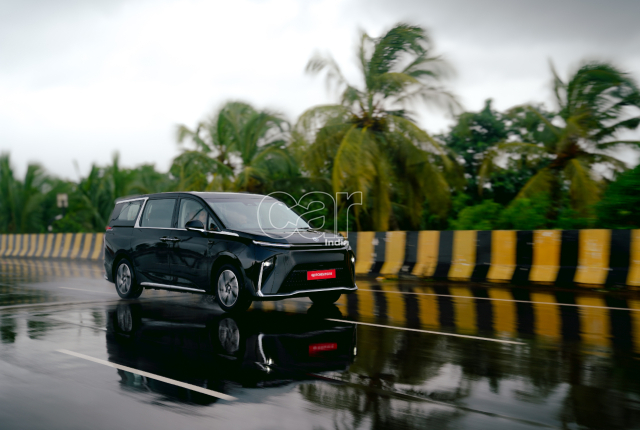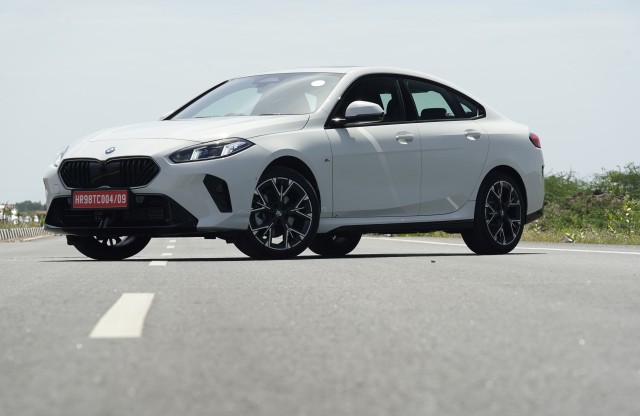
 The Spark, on the other hand, wins friends with its ride quality. On city roads, its softer set-up means sharp-edged potholes are handled comfortably, but the trade-off comes at highway speeds, when quite a lot of body roll manifests itself. Still, for overall grip, the Spark is a friendlier ally than the other two cars and you have enough advance warning when the car is approaching its limit. What lets you down slightly, however, is the feeling through the steering wheel and the rubbery gearshift action. The ’box yawns through ratios with the second-to-third shift requiring some precise actuation. Visibility past the chunky A-pillar is also a bit of an issue and the deep dash and low seating make it a bit of a challenge for shorter drivers.
The Spark, on the other hand, wins friends with its ride quality. On city roads, its softer set-up means sharp-edged potholes are handled comfortably, but the trade-off comes at highway speeds, when quite a lot of body roll manifests itself. Still, for overall grip, the Spark is a friendlier ally than the other two cars and you have enough advance warning when the car is approaching its limit. What lets you down slightly, however, is the feeling through the steering wheel and the rubbery gearshift action. The ’box yawns through ratios with the second-to-third shift requiring some precise actuation. Visibility past the chunky A-pillar is also a bit of an issue and the deep dash and low seating make it a bit of a challenge for shorter drivers. 
 The Alto feels oh-so-familiar when you step inside. Yes, you do get a new instrument cluster with a digital fuel-gauge and trip-meter, but the rest of the car remains faithful to the original template
The Alto feels oh-so-familiar when you step inside. Yes, you do get a new instrument cluster with a digital fuel-gauge and trip-meter, but the rest of the car remains faithful to the original template
ith hard-wearing plastics. It does not have the finesse of the Spark and neither does it feel as solid as the Hyundai, but the Alto is not bad for the price. The feel from the controls, however, is disappointing. The throttle actuation feels as if there are beads on the cable and the clutch is a little jerky as well. Minus marks. But when you get going, the little Alto puts a big smile on your face. It’s surprising what 67 PS can do in a car that weighs a little over 700 kg. Tap the throttle and you zip past most city traffic. Even on the peripheral roads of the city, the Alto had enough pep to get past a line of lorries. It rides well on city roads, too, and the tiny proportions give it a nimbleness that is a real boon. Point, aim, squeeze and you’re there; this is the truest modern iteration of the point-and-squirt car. 
 All these three cars will be used by families, though, and, as such, we cannot ignore their liveability for the household. The Alto is a squeeze for any more than four people, unless, of course, you have a bunch of midgets or children. The boot is flat, but small, and even a single cabin-bag sized piece of luggage is a squeeze.
All these three cars will be used by families, though, and, as such, we cannot ignore their liveability for the household. The Alto is a squeeze for any more than four people, unless, of course, you have a bunch of midgets or children. The boot is flat, but small, and even a single cabin-bag sized piece of luggage is a squeeze.
The Spark, in comparison,
as the roomiest cabin relatively speaking, but the boot can barely hold a textbook more than the Alto. The Santro’s boot is the most generous of the trio, although
ear leg room is surprisingly kimpy. Nevertheless, the upright seating and tall-boy design lend it an airy interior.
The shorter-geared Santro delivers surprising fuel-efficiency and its overall figure of 18.7 km/l is the best among the trio. The Alto returns 17.5 kp/l with the Spark lagging behind at a figure of 16 km/l, overall. Both the Alto and Spark have a top speed in excess of 150 km/h, while the Santro struggles to get past 140.  After spending a few days with all three cars, it’s hard to say which is the best. As an ownership proposition, they all come with their share of pluses; the Spark carries the Chevy promise of free maintenance, the Santro enjoys strong resale value and Maruti service is available nationwide.
After spending a few days with all three cars, it’s hard to say which is the best. As an ownership proposition, they all come with their share of pluses; the Spark carries the Chevy promise of free maintenance, the Santro enjoys strong resale value and Maruti service is available nationwide.
It all boils down to personal preference in the end. If comfort is your primary objective, the Spark is the best, if you want ease of ingress and egress with a good driving position, then it has to be the Santro. However, if you want a little car that is a right hoot to hot-foot over your cityscape, then it’s got to be the Alto.
Alto K10 vs Santro vs Spark






















Leave a Reply